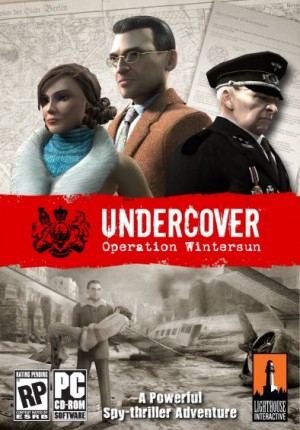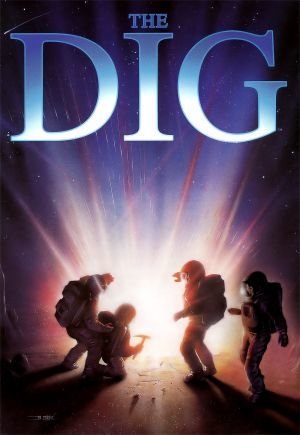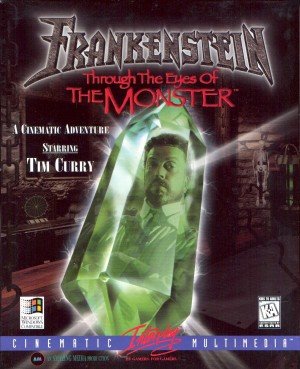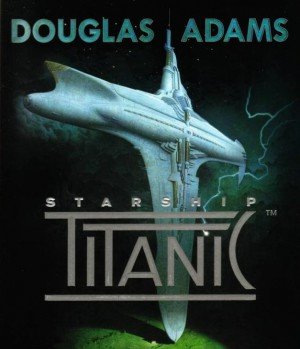Review for Undercover: Operation Wintersun
Undercover: Operation Wintersun is a spy-themed adventure that takes place during World War II, a setting that has provided the foundation for very few games that aren't all about the action. But espionage is as important to war as the battlefield, and provides some interesting possibilities for adventures. In Undercover, our spy is not quite your suave James Bond type. He's more the type who would be stuck in a laboratory designing all 007's cool gadgets. This results in a game that's more about using your brain to solve puzzles and stay undetected than going in all guns-blazing.
The game begins with our player character, Dr John Russell, being approached by the British Secret Service. Russell is a renowned nuclear physicist in London, and is asked to inspect a recently obtained set of German documents. These documents, if genuine, contain plans to build the world's first nuclear weapon -- a tool that would make the Germans virtually unstoppable. Russell, being an expert in the science and fluent in German, is sent to Berlin with a real spy to aid him, in an attempt to stop the progress of the weapon project, Operation Wintersun.
After some time in Berlin, Russell and his cohort, Peter Graham, are joined by Anne Taylor, a beautiful but reckless MI6 agent with little respect for the rules. Your companions don't always remain with you, but one is at your side as often as not. Although we never gain direct control of Graham or Taylor, they are generally available to offer advice, conversation, or the occasional bit of practical help. Mind you, their advice isn't usually of much use, consisting mostly of "You're the smart one, you figure it out!" The conversations mainly serve to develop the characters and flesh out the settings. A couple of times your companions will be able to actually lend a hand to solve a puzzle, making them invaluable, but most of the time they're just there to add some depth to the game, rather than being essential to progress.
The story is fairly straightforward for the most part, being mainly about Russell's attempt to track down the bomb and stop it from being used. However, later in the game there are a few interesting twists that keep things interesting, leaving Russell unsure who he can trust and what to do. The plot takes him to such places as MI6's London headquarters (albeit only briefly), a Berlin research institute, and a quaint German village with something to hide. While the setting is obviously integral to the premise, aside from the occasional Nazi insignia (merely a variation of the actual swastika) and German soldier, there isn't much that's overtly militaristic to give the impression of a war raging around you. For most of the game you'll find yourself exploring generic streets and buildings, though they are designed to look authentic to the period.
Aside from your companions, there aren't a huge number of characters with whom you can interact, but each tends to have plenty to say, and conversation is as simple as exhausting all dialogue topics. The writing is fairly good, with responses sounding appropriate to a man of Russell's type -- nervous but inquisitive, as you'd expect a genius scientist who's out of his natural element to be.
Visually, Undercover features crisp 2D backgrounds with 3D characters, rendered in a fairly realistic style. The backgrounds are impressive, but the characters are rather less detailed, and bring the overall quality down somewhat, especially in close-ups where their faces are more visible. Cutscenes further suffer, being even less detailed and attractive than the usual 2D backgrounds. Although there aren't many opportunities for them, there are a few ambient background animations where appropriate, whether flags fluttering, lights blinking, or snow gently falling. Unfortunately, despite the overall quality of the detail, much of the game is spent in fairly drab and dull areas such as offices, industrial settings, and nighttime streets. A few notable areas towards the end of the game break free of this tendency, serving to highlight just how limited its previous locations really were, so it's a shame a bit more variety isn't introduced earlier on.
The musical score uses a nice orchestral style that suits the setting well. At the default volume, the music is always playing in the background, but at a comfortable level that doesn't interfere with the voiceovers or sound effects. The voice acting is fairly good, but the accents are a little odd. The MI6 agents, despite being supposedly English, have slightly foreign-sounding accents, and an SS officer encountered later in the game has what sounds like a genuine English accent. The main character, unfortunately, rarely shows sign of the emotions you'd expect from him. His natural delivery suits his personality, but he's far too monotonous and calm under stressful circumstances -- not something you'd expect from a geeky scientist type.
The game's puzzles are mostly logical and inventory-based, and many are quite easily solved. Objects will need to be combined, and you can quickly find yourself with a stuffed inventory to scroll through. But the game is split into fairly small areas, which means that each area needs to be completed before another becomes available, reducing the number of possibilities for item use. As you'd expect in a spy adventure, there are a few puzzles requiring code breaking, but the clues should be sufficient to see you through. There are a couple of annoying puzzles, specifically a few pixel hunts (in one, an object was barely visible due to being hidden in shadow) and one puzzle that actually requires knowledge (albeit basic) of the German language. Not being a German speaker, this one was especially confusing to me.
The pixel hunts can at least be avoided if so desired. Although I didn't use it while playing, the game offers a Novice mode, which allows the option to highlight all available hotspots on screen with a keystroke. Many players will find this useful (and in the case of those annoying pixel hunts, perhaps necessary), since there are a lot of available hotspots on most screens. Many of these hotspots have no practical use, being there solely for observation and interest. There are even a number of inventory items that can be taken that have no real use. While not adding as much benefit as they could have, the added interactivity is still notable at a time when hotspots are all too often limited to those used in puzzles.
Although Russell is frequently in harm's way, it's not actually possible for him to die, at least not permanently. There are sections in which you can get caught by guards, but this doesn't result in a game over. All that happens is that the game rewinds to the start of the section in which you got caught, and you're allowed to try again. This is useful for those of us who might forget to save our games often. One section involves dodging patrolling guards by selectively creating dark areas in a room and then sticking to the shadows. There are also a few timed parts, which are marked by a clock icon that appears on screen. There is no real "action" involved, however, and these sections can be completed easily enough, so adventure purists need not worry.
The point-and-click interface is very straightforward, using the same sort of left/right mouse click options, plus inventory and menu access as most other third-person games. Along with the hotspot identifier, there is also an option to highlight all exits on screen. You'll be clicking the exit icons a a lot, as this will automatically load the next screen. Since Russell doesn't tend to move all that quickly, you won't want to wait for him to cross wide spaces just to move things along.
While Undercover boasts a number of locations based in London, Berlin, and Stalingrad, the game is not a particularly lengthy one. London in particular can be completed in only a few minutes. Berlin and the surrounding areas make up the majority of the game. All told, the game could probably be finished in around 10 hours by an experienced player.
Overall, Undercover: Operation Wintersun is well worth playing for fans of traditional adventures. The production values are reasonably high quality, the puzzles are good (at least to me, who prefers puzzles to be straightforward and uncomplicated) and the plot and characters suffice to maintain interest through the end. The only real caveat is that the game doesn't really excel in most areas -- it's all of a decent quality, but not an exceptional one. If you're looking for a genre-defining experience, then, you're likely to be disappointed, but if you're content with a solid, serious adventure set in a largely overlooked period with an unusual protagonist, you'll be more than satisfied.




























